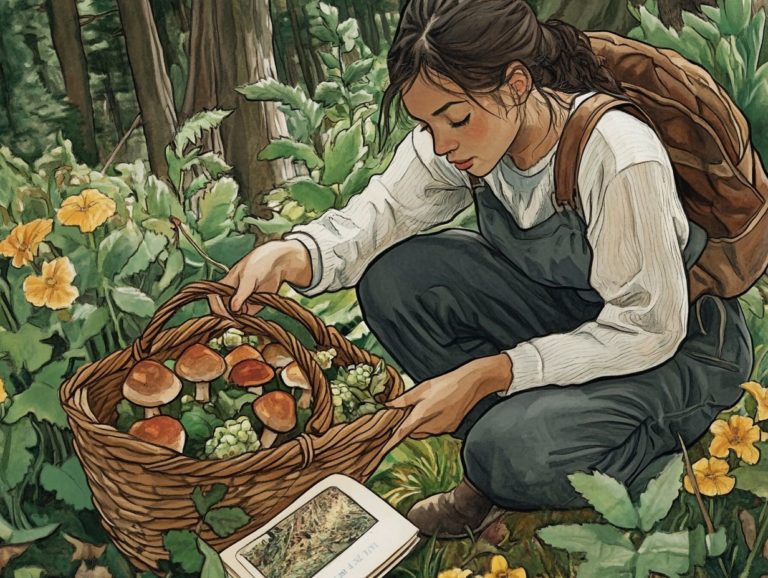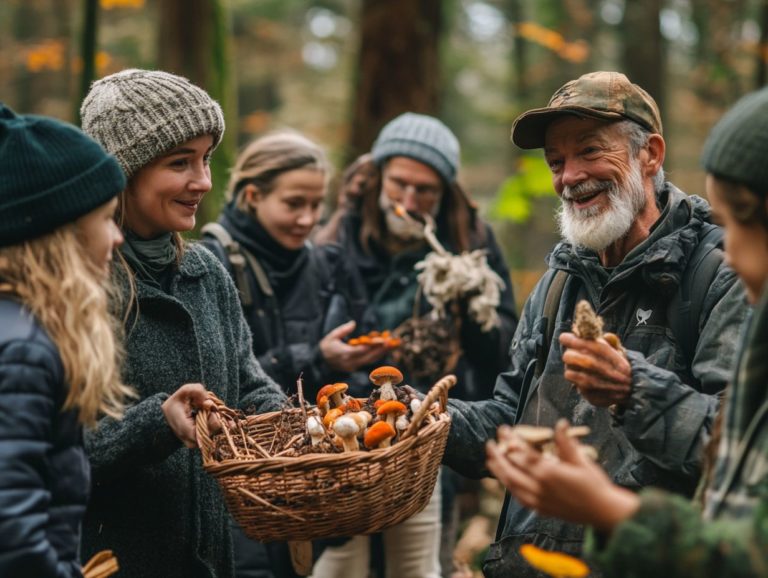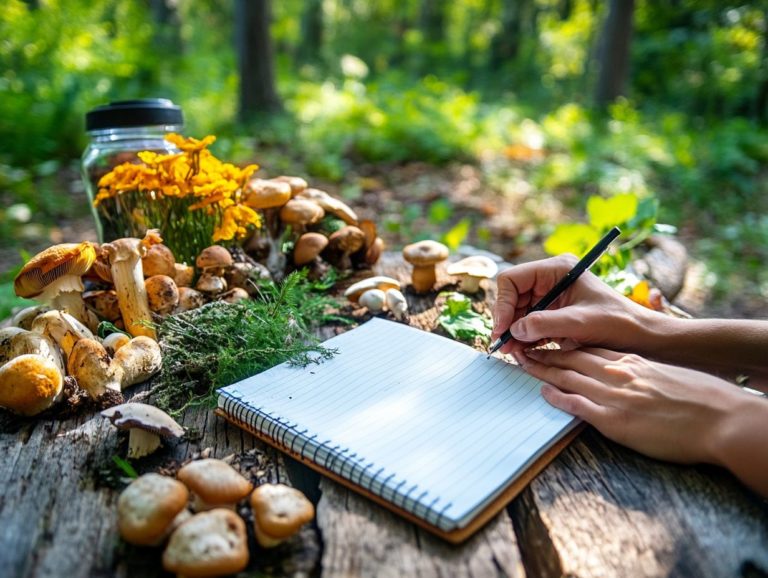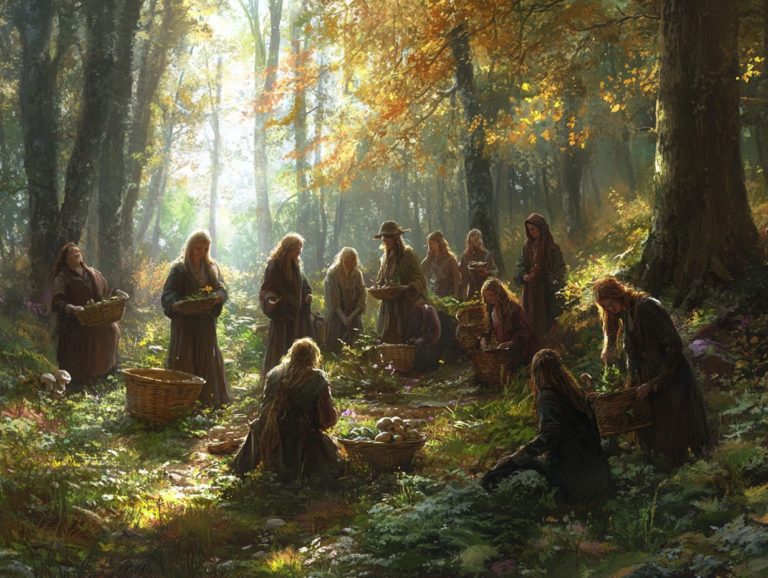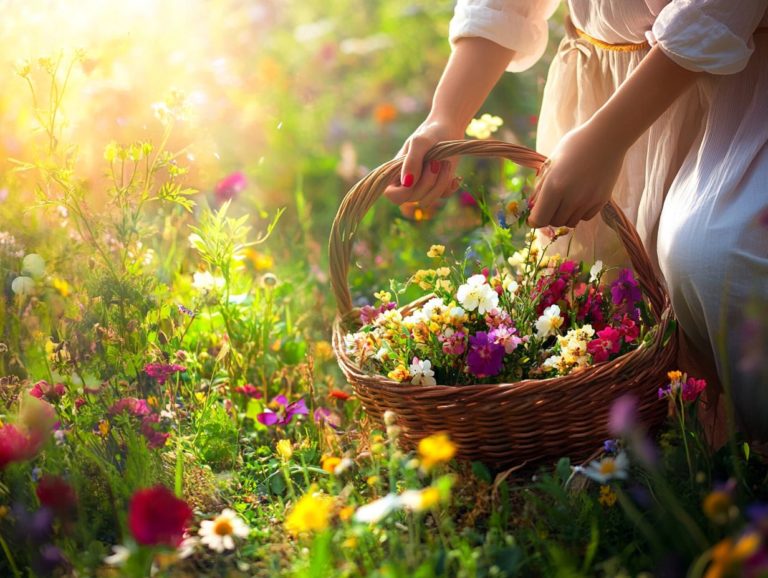How to Spot Edible vs. Poisonous Plants
Understanding the distinction between edible and poisonous plants is crucial for anyone eager to learn how to forage or elevate their culinary skills with fresh, wild ingredients.
Get ready to dive into the world of foraging with this essential guide! This article will lead you through the process of identifying edible plants by delving into their common characteristics and effective identification techniques.
Additionally, it addresses how to recognize poisonous plants, outlines safety precautions while foraging, and provides essential tips for proper preparation.
Explore valuable resources designed to help you navigate the world of plant identification with confidence.
Contents
- Key Takeaways:
- Identifying Edible Plants
- Identifying Poisonous Plants
- Safety Precautions When Foraging for Edible Plants
- Resources for Plant Identification
- Your Plant Identification Questions Answered!
- What are some general characteristics of edible plants?
- How can I identify poisonous plants?
- What are some visual cues that can help me differentiate between edible and poisonous plants?
- Are there any universal rules for identifying edible plants?
- How can I stay safe while foraging for edible plants?
- What should I do if I accidentally ingest a potentially poisonous plant?
- Ready to Start Foraging?
Key Takeaways:
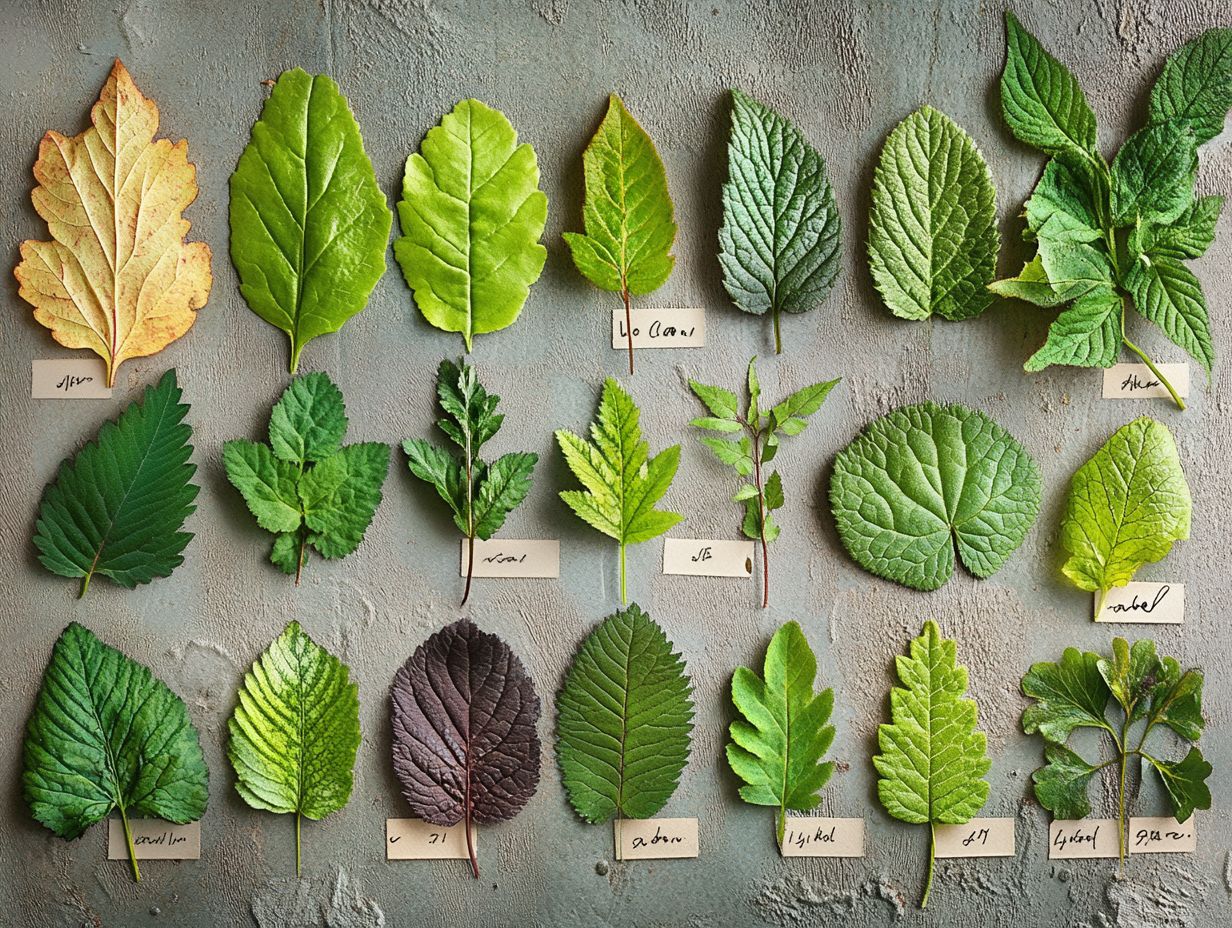
- Always know the common characteristics of edible and poisonous plants to avoid confusion while foraging.
- Proper identification techniques and resources can help differentiate between edible and poisonous plants.
- Take necessary safety precautions and follow proper preparation and cooking techniques when foraging for edible plants to avoid health risk.
Why It’s Important to Know Edible vs. Poisonous Plants
Understanding the distinction between edible and poisonous plants is essential for anyone eager to learn how to forage for food. A key aspect of this knowledge is identifying toxic vs. edible mushrooms, as mishandling this information could lead to serious health risks or, in the worst cases, even fatal outcomes.
Misidentifying flora can have far-reaching implications, impacting not just your own health but also the local ecosystem and community practices surrounding sustainable agriculture and healthy living.
Experts from the Cleveland Clinic emphasize proper plant identification. They highlight that foraging is more than just a lifestyle choice; it s a responsible engagement with nature. This knowledge enables you to gather safe, nutritious foods while deepening your relationship with the environment during vibrant spring and summer seasons.
Recognizing which plants are safe to eat can significantly elevate your health. Foraged foods often come packed with vital nutrients and antioxidants that promote overall well-being.
Engaging in foraging also opens doors to community involvement. Local workshops and expert-guided outings allow you to share experiences and learn from others, ultimately strengthening community ties.
By sharing knowledge about edible plants, you contribute to a culture of responsibility and encourage sustainable practices that benefit the environment.
In this light, foraging transforms into both a communal activity and a personal journey toward greater self-reliance and a profound respect for the natural world.
Identifying Edible Plants
Identifying edible plants is a remarkable skill that intertwines keen observation, practical experience, and a wealth of knowledge. It enables you to gather nutritious greens, fruits, and herbs from the wild with confidence.
As interest in organic and sustainable food sources continues to rise, mastering the art of recognizing plants like dandelions, ramps, and nettles becomes essential for health-conscious outdoor enthusiasts and culinary explorers.
This expertise not only enhances your diet but also deepens your connection with the vibrant flora and fauna that surrounds you.
Common Characteristics of Edible Plants
Edible plants often share distinct characteristics that help you identify safe options in the wild. For a comprehensive overview, check out the guide on identifying edible plants along trails. Look for unique leaf shapes, vibrant colors, and delightful aromas.
Familiarizing yourself with these traits is essential; they guide you in spotting healthful greens like dandelion leaves and the seasonal fruits that grace the spring and summer months.
For instance, dandelion leaves are easily spotted thanks to their jagged edges and deep green hue, making them a go-to choice for salads. Meanwhile, young nettle flaunts a vibrant green color and serrated leaves, perfect for soups and stews.
Both of these plants are nutritional powerhouses, meaning they are packed with vitamins and minerals that offer numerous health benefits, such as anti-inflammatory properties and improved digestion.
By recognizing these traits, you enable yourself to connect more deeply with nature and make informed culinary choices, leading to a healthier lifestyle.
Act now to enhance your foraging skills!
Edible Plant Identification Techniques
Employing effective identification techniques is essential as you venture into the world of foraging. This ensures that you can safely consume wild edibles while steering clear of poisonous species.
Techniques can range from visual cues and sensory analysis to consulting local experts and utilizing research tools that help you confidently identify plants.
Engaging with community resources and workshops can significantly enhance your foraging experience, blending traditional knowledge with modern research.
For instance, visual identification focuses on observing leaf shapes, flower colors, and growth patterns. This practice helps you distinguish between similar-looking species. Field guides are invaluable resources for expanding your knowledge, offering detailed descriptions and images of edible plants. Smartphone apps have also emerged as modern tools that assist in real-time identification using tools that help identify plants based on pictures.
Joining local foraging groups fosters collaboration, allowing you to share tips and experiences with fellow enthusiasts. Continued learning whether through online courses, books, or mentorships enriches your understanding and paves the way for safer, more successful foraging adventures.
Identifying Poisonous Plants
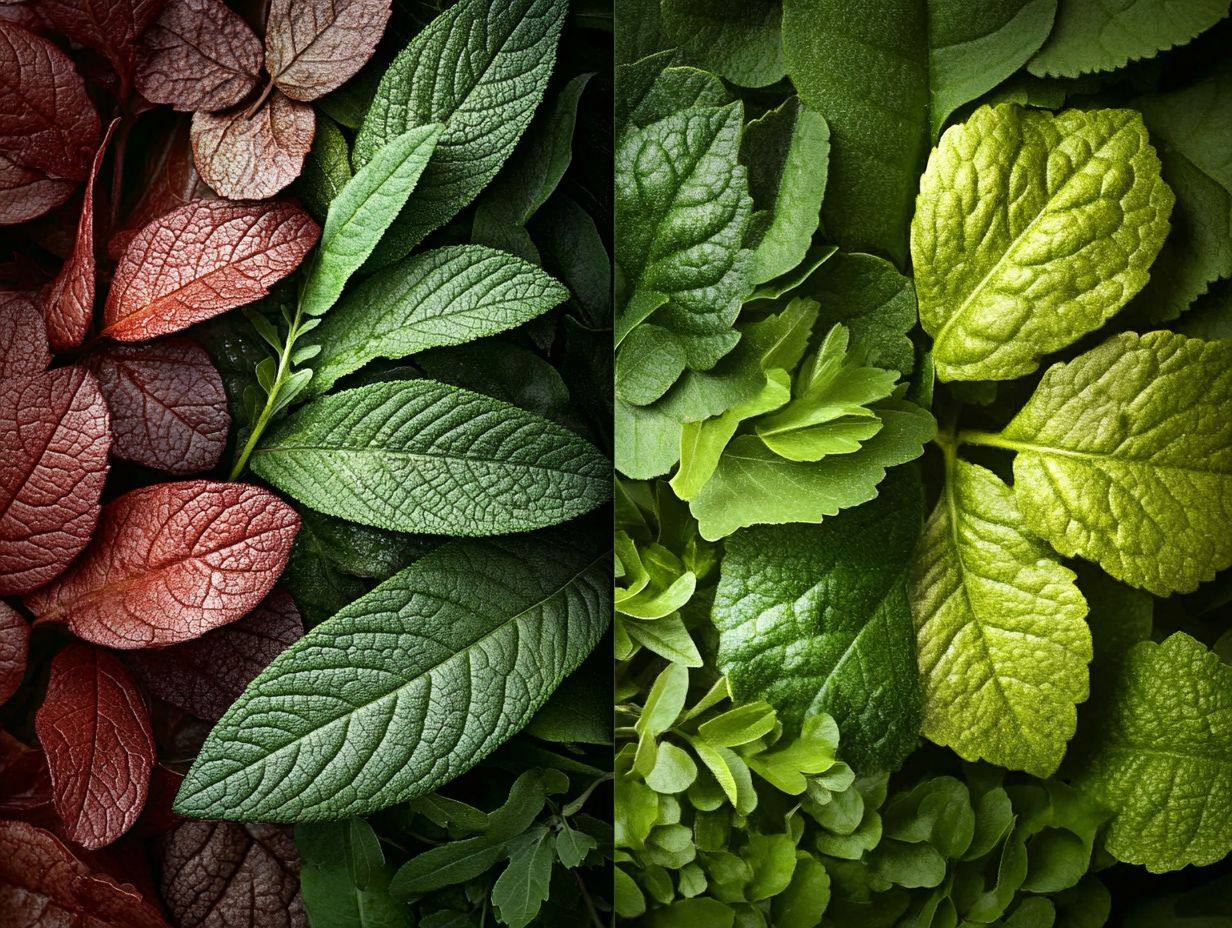
Recognizing poisonous plants is an essential skill for any forager. It requires careful attention and a deep understanding of the risks associated with wild flora. To enhance your foraging knowledge, consider exploring identifying safe edibles: a forager’s guide. These toxic plants can present serious health threats, and a simple misidentification can lead to dire consequences.
Boost your knowledge now to avoid dangerous encounters! Enhance your understanding through community resources, thorough research, and expert guidance. By familiarizing yourself with local wildlife and the defining characteristics of hazardous plants, you ensure a safer foraging experience and foster a responsible engagement with nature.
Common Characteristics of Poisonous Plants
Poisonous plants often possess distinctive characteristics that set them apart from their edible cousins. As a forager, it’s essential to recognize these traits. Understanding the difference between edible and poisonous plants can help you identify features that may manifest as specific leaf shapes, unusual colors, or distinctive smells, all serving as warning signs of potential danger.
For example, the delicate, bell-shaped flowers of Lily of the Valley may charm the unsuspecting, but they conceal potent cardiac glycosides. These plant compounds can affect the heart and may be deadly if ingested. Similarly, the pungent aroma of Wild Onion can easily mislead you; if mistaken for its edible relatives, it might lead you to consume toxic plants lurking nearby.
Recognizing these telltale signs is crucial not just for your safety but also for the preservation of local ecosystems. The repercussions of misidentification stretch far beyond mere discomfort; they can trigger severe health consequences. This underscores the significance of vigilance and education in your foraging practices.
Poisonous Plant Identification Techniques
Utilizing effective identification techniques for poisonous plants is crucial for your foraging adventures. These methods can help you avoid dangerous encounters in the wild. To enhance your skills, consider identifying edible plants in your region, studying visual characteristics, consulting field guides, and tapping into community resources to deepen your understanding of local flora and fauna.
Regarding visual identification, pay close attention to the plant’s leaves, flowers, and growth patterns. Even the slightest differences can signal toxicity. Additionally, learning how to spot invasive edibles can be crucial. Digital research tools, like online databases and mobile applications, offer quick references and updates on local poisonous species, making your research more efficient.
Collaborating with local experts, such as botanists or seasoned foragers, can further enhance your knowledge through shared experiences and practical insights. Safety should always be your top priority in foraging practices, emphasizing the importance of accurate identification before consumption.
By involving the community, you foster shared learning and promote responsible foraging, creating a safer environment for everyone involved.
Safety Precautions When Foraging for Edible Plants
Prioritizing safety precautions while foraging for edible plants is crucial for ensuring a rewarding and hazard-free experience in the great outdoors.
Cultivating a good knowledge of local flora, engaging with community experts, and consulting experts can help minimize the risks of misidentification and accidental poisoning.
By adhering to established guidelines and committing to continuous education, you can confidently explore the abundance of edible plants that spring and summer have to offer.
Tips for Avoiding Poisonous Plants
Avoiding poisonous plants is an essential skill for any successful forager. Implementing effective strategies can significantly lower the risk of mishaps. By researching local poisonous species and learning their characteristics, you can make safer choices while foraging.
If you are new to this adventure, consider starting with well-known edible plants and gradually expanding your knowledge.
Joining local foraging groups or participating in workshops can be incredibly beneficial. These gatherings often offer hands-on experiences that allow you to learn from seasoned foragers and exchange valuable insights.
One participant shared how a mentor pointed out the distinct serrated leaves of a toxic plant, which they would have easily mistaken for a safe variety. Such firsthand lessons highlight the importance of careful identification, as misidentification can lead to serious consequences.
Diligent note-taking and having a field guide handy can be invaluable tools, ensuring that you remain informed and cautious in your quest for wild edibles.
Proper Preparation and Cooking Techniques
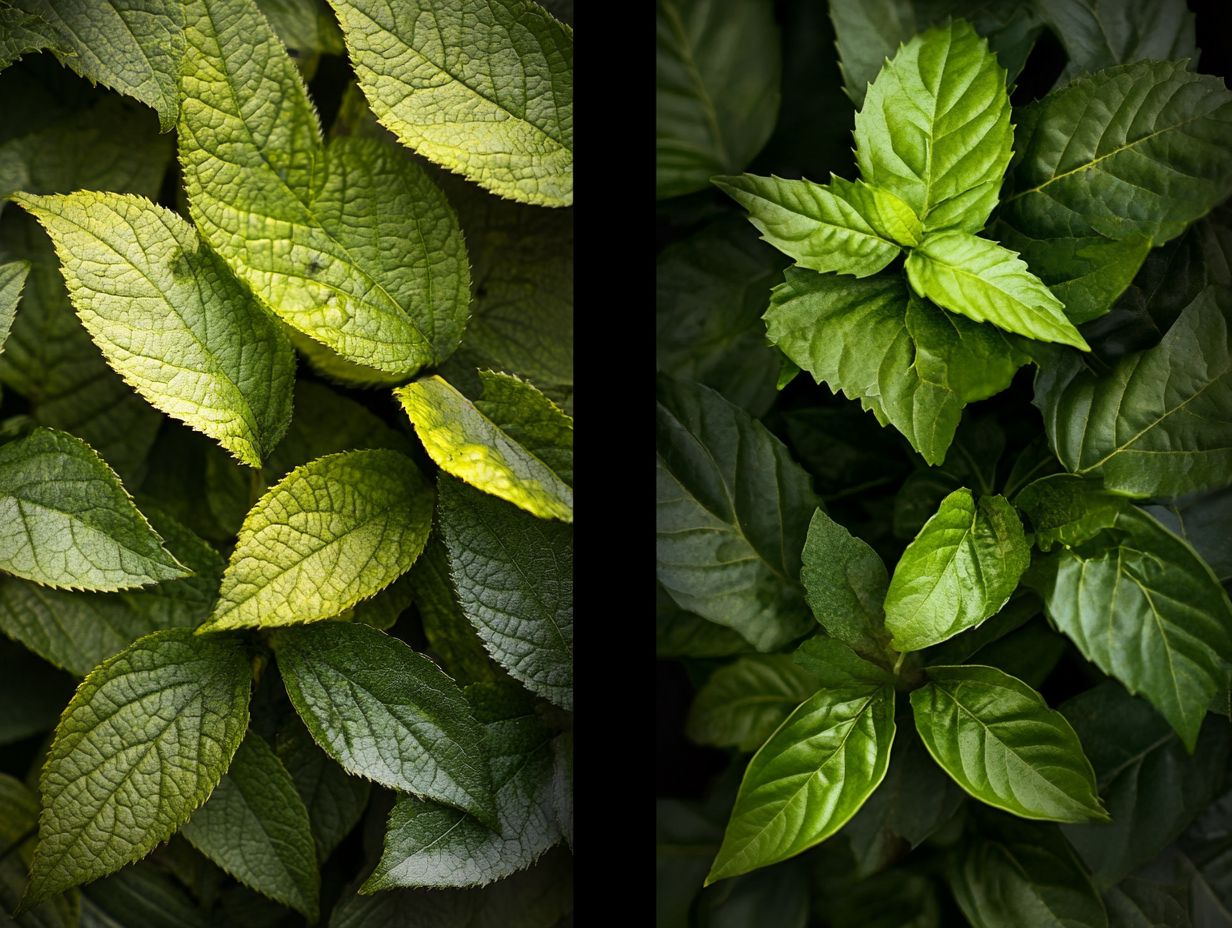
Mastering proper preparation and cooking techniques is key to transforming foraged edible plants into delightful and safe meals. Understanding how to clean, cook, and store wild greens and fruits maximizes their health benefits while preserving their natural flavors.
Know which plants require specific preparation methods to elevate your foraging experience and deepen your connection to the food sourced from nature.
Take stinging nettles, for example. They can work wonders in soups or pestos, but handle them with care to avoid their pesky irritants, which vanish once cooked. Then there’s wild garlic, a robust addition to your dishes, as long as you identify and harvest it at the right time of year. Techniques like blanching a cooking method that softens vegetables by briefly boiling and then cooling them quickly can help mellow the bitterness of certain greens, making them far more enjoyable.
Learning to recognize and utilize these edible treasures sharpens your culinary skills and enriches your appreciation for sustainability and the environment.
Resources for Plant Identification
Accessing reliable resources for plant identification is vital, whether you’re a novice or an experienced forager. These tools equip you with essential knowledge for safe foraging practices.
A treasure trove of resources awaits informative books, intuitive websites, and cutting-edge apps all designed to help you swiftly distinguish between edible and poisonous plants, elevating your foraging experience.
Engaging with community groups and local experts enhances your journey and cultivates a network of shared knowledge and a passion for the natural world.
Don’t miss out on the thrilling adventure of foraging! Join local groups or start your own foraging adventure today.
Books, Websites, and Apps for Plant Identification
A wealth of books, websites, and apps serves as invaluable resources for anyone looking to enhance their plant identification skills while foraging for edible species. These tools offer visual aids, detailed descriptions, and practical tips that enable you to confidently identify local plants and steer clear of poisonous ones.
Engaging with these resources, alongside the expertise of your community, cultivates a deeper appreciation for the variety of different plant types in your natural surroundings.
By leveraging curated recommendations, you can tap into a treasure trove of information tailored to various skill levels. Features like interactive maps, user-friendly interfaces, and community forums facilitate seamless knowledge sharing.
Whether you lean toward a comprehensive guidebook, an intuitive mobile app, or an informative website, these resources can significantly enrich your foraging experience. They often highlight seasonal changes, regional specialties, and sustainable foraging practices, promoting a harmonious relationship with nature.
Combining these tools with local community wisdom ensures a richer and safer exploration of the edible plants thriving in your environment.
Your Plant Identification Questions Answered!
What are some general characteristics of edible plants?
Edible plants typically have leaves that are smooth and non-glossy. They may also have a pleasant smell or taste and are usually found in areas with ample sunlight and water sources.
How can I identify poisonous plants?
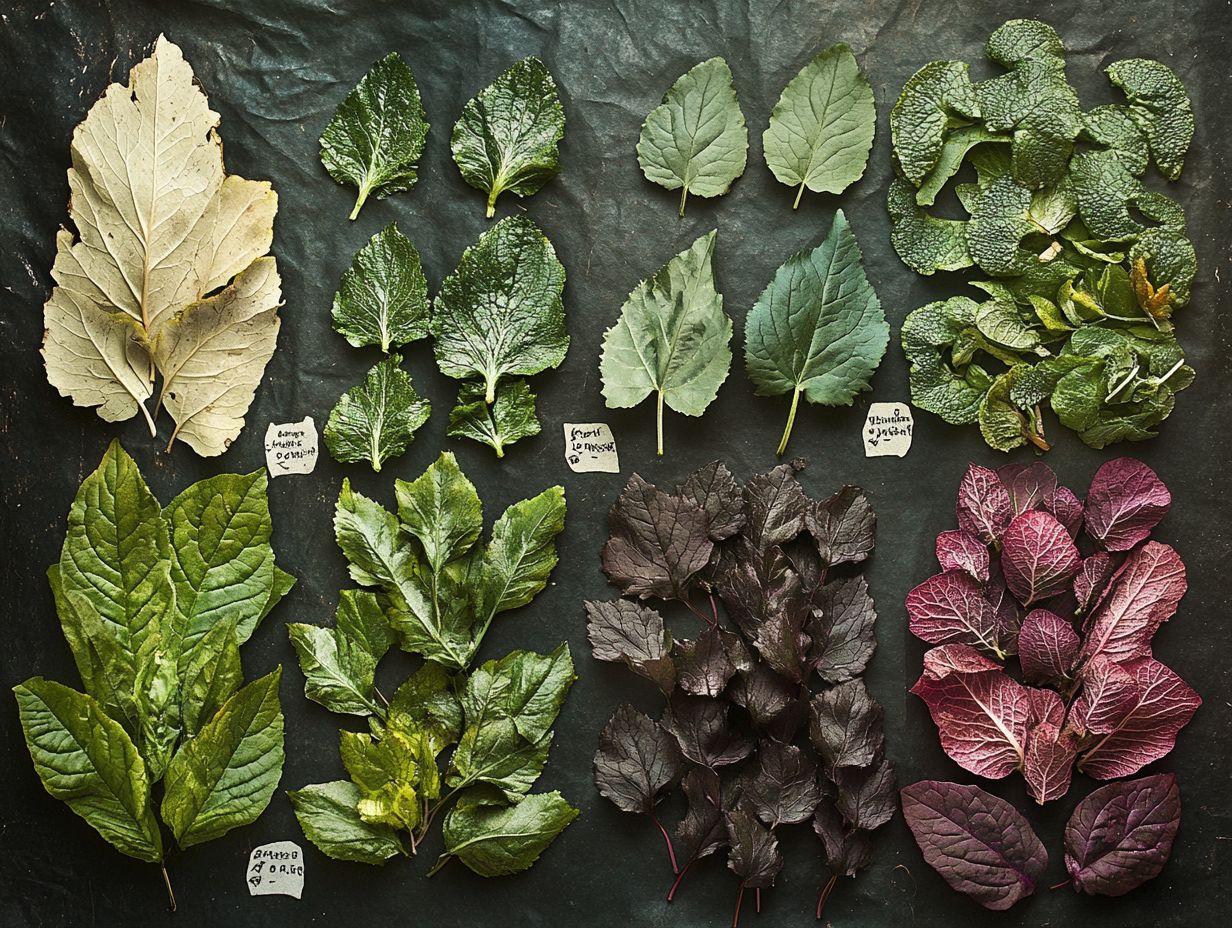
Poisonous plants often have brightly colored or unusually shaped leaves. They may also have a foul odor and tend to grow in shady, damp areas, sometimes with a waxy or hairy appearance.
What are some visual cues that can help me differentiate between edible and poisonous plants?
Some visual cues to look out for include the shape and color of the leaves, the presence of thorns or spines, and the overall appearance and size of the plant.
Are there any universal rules for identifying edible plants?
No, there is no one rule that applies to all plants. It is essential to research and educate yourself on specific plant species and their characteristics before consuming them.
How can I stay safe while foraging for edible plants?
Always be cautious when foraging for plants. Never eat anything unless you are 100% sure it is safe. It is also helpful to bring a field guide or consult with a local expert before consuming any plants found in the wild.
What should I do if I accidentally ingest a potentially poisonous plant?
If you suspect you have ingested a poisonous plant, seek medical attention immediately. It is also helpful to bring a sample of the plant with you to the hospital for proper identification and treatment.
Ready to Start Foraging?
Grab your guidebook and start exploring these resources today for a fun and safe foraging adventure! Join a local foraging group for hands-on support!

